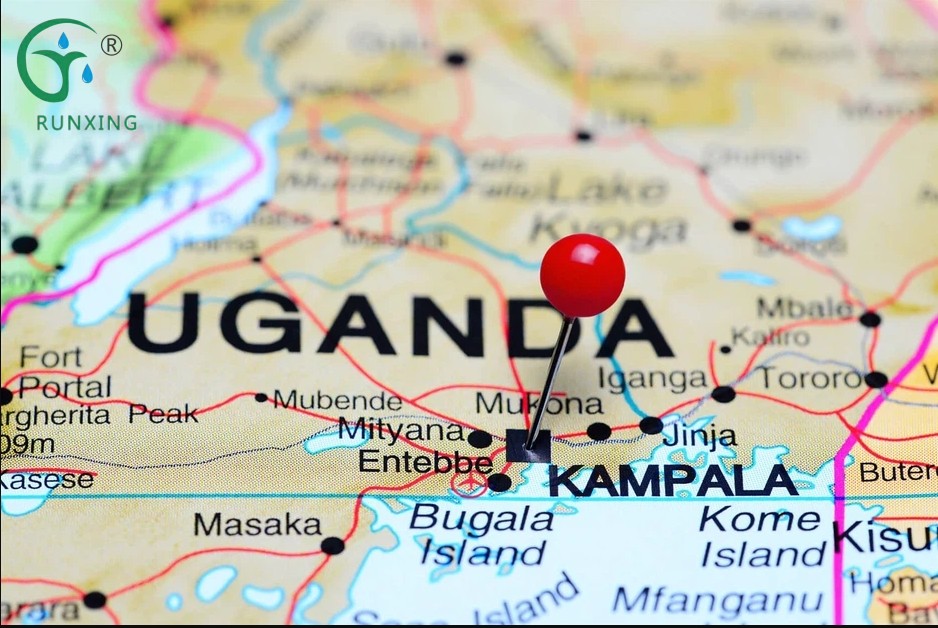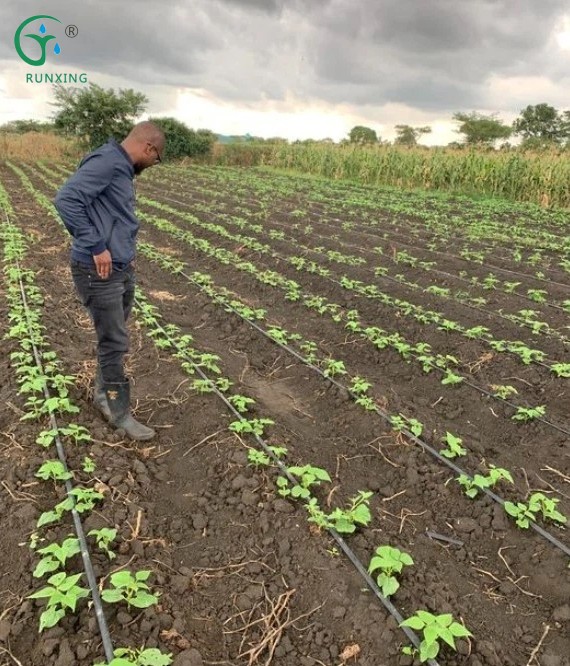Uganda drip irrigation market analysis
Uganda's agriculture is the backbone of the country's economy, accounting for about 25% of its GDP and 70% of its employment. Although agriculture is vital to Uganda's economy, the country's agricultural production still faces many challenges, including climate change, erratic rainfall patterns, and soil degradation. These problems make it difficult for traditional irrigation methods to meet the water needs of crops, especially in the dry season.

1. Why is Uganda suitable for drip irrigation?
- Water resource utilization efficiency: Uganda's rainfall is uneven, and many areas experience severe water shortages during the dry season. Drip irrigation systems can effectively deliver water directly to the roots of plants, reducing evaporation and water loss, and greatly improving water resource utilization efficiency.
- Improve yield and crop quality: By precisely controlling the amount and time of irrigation, drip irrigation technology can ensure that crops receive sufficient water during the critical period of growth, thereby improving crop yield and quality.
- Adapt to climate change: Farmers in Uganda are increasingly facing challenges brought about by climate change, especially changes in rainfall patterns. Drip irrigation systems can provide a stable water source during the dry season and reduce the impact of climate uncertainty on agricultural production.
- Cost and resource-saving: Compared with traditional irrigation methods, drip irrigation systems use less water, reducing water and labor consumption, and can help farmers reduce production costs in the long run.

2. Market size and growth potential
- With the promotion of agricultural modernization by the Ugandan government and international organizations, the drip irrigation market has experienced rapid growth in recent years.
- The government is encouraging farmers to adopt efficient water-saving irrigation technologies through policy support, financial subsidies, and technology promotion.
- The increasing impact of global climate change on agriculture has driven more farmers to seek reliable irrigation solutions, further accelerating the expansion of the drip irrigation market.
- The drip irrigation market in Uganda is expected to maintain rapid growth in the coming years.
As farmers' understanding of drip irrigation technology deepens, both large farms and small farmers will increasingly adopt drip irrigation systems to boost production and income.
3. Main challenges
Although drip irrigation technology has significant advantages in Uganda, the market still faces some challenges:
Cost issues: For many small-scale farmers, the initial investment in drip irrigation systems is high and may be unaffordable. This requires more financial support and preferential policies from the government and relevant institutions.
Technical training: Many farmers in Uganda lack sufficient knowledge of drip irrigation technology and require extensive training and technical support to ensure the effective application of drip irrigation systems.
Supply chain constraints: The supply of high-quality drip irrigation equipment in the Ugandan market is still limited, and most of the equipment relies on imports, which may lead to instability in the supply chain.
4. Market opportunities
Despite the challenges, the Ugandan drip irrigation market contains huge development opportunities:
Government support: The Ugandan government is increasing its investment in agricultural modernization, which has created a favorable environment for the promotion of drip irrigation technology.
International aid and investment: Multilateral and bilateral aid projects are increasing, and these funds can be used to develop drip irrigation infrastructure and provide technical training and equipment subsidies.
Local production: Establishing local drip irrigation equipment production capacity, reducing costs, and ensuring supply chain stability is a potential development direction.
Drip irrigation technology is of great significance in the development of Uganda's agriculture, helping farmers overcome the challenges of water shortage and climate change, and improving agricultural production efficiency and sustainability.
RainStar will continue to be committed to providing high-performance and reliable agricultural equipment to global customers to help the modernization of agriculture in various places. This cooperation is just the starting point for RainStar to enter the African market. In the future, we will continue to explore more countries and regions and contribute to the sustainable development of global agriculture.
RainStar Drip Irrigation – Excellence in Every Drop
About Us
We are dedicated to offering innovative, water-saving, and labor-saving irrigation solutions for agriculture worldwide. Our focus on quality and continuous innovation drives the development and progress of the industry.
LOGO
This stunning beach house property is a true oasis, nestled in a serene coastal community with direct access to the beach.
Opening Hours
Monday - Friday : 9AM to 5PM
Sunday: Closed
Closed during holidays
Contact
+18888888888
hezuo@eyingbao.com123 West Street, Melbourne Victoria 3000 Australia
